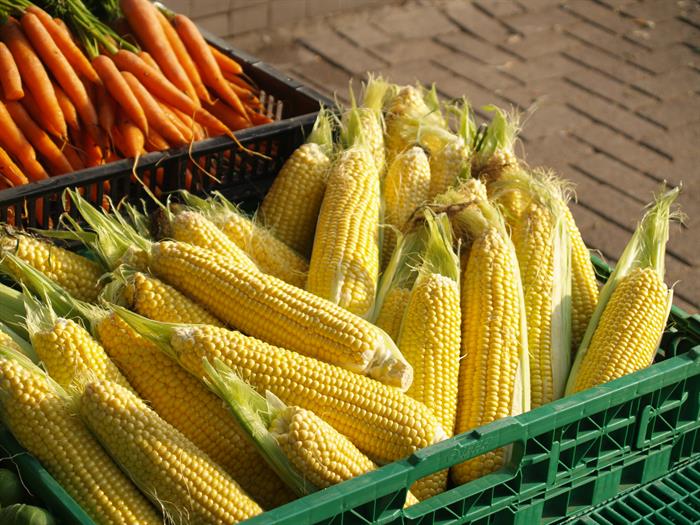
Corn (also known as maize), is a very important agronomic cereal and fodder crop.
There are four species of this genus (Zea) all from tropical America; but the one species Zea mays is by far the most commercially significant. Important Commercial Cultivars include:
- Zea mays saccharata (sweet corn)
- Zea mays averta (commercially used for popcorn)
- Zea mays japonica (sometimes known as quadricolor corn)
Many corn hybrids are also available to suit a variety of climates and reduce incidence of blight, viruses, rots, and other diseases.
Appearance
Large, robust annual and perennial grasses with a single main culm plus one or two lateral branches in the leaf axes; from 1.5 – 2.5 m tall depending on the species. Leaves are alternate with broad, sword-shaped leaf blades and parallel veins with a prominent mid-rib, and small ligules. Upper surface is hairy, lower surface hairless Most have thick short rhizomes and the ears (‘corn cobs’) have tassels protruding from the apex.
Cultivation
This species will grow in a range of climates but is frost tender; fertile, moist soils. Plant in blocks to aid pollination – they are wind pollinated.
Soil and Fertility
Although maize can tolerate acidic soils, soil pH should not be allowed to drop below 5.5. Maize can grow in the pH range 5-8, but optimum growth is usually seen in the 5.6 to 7.5 range. Soil must be well-drained; water-logged and wet soils severely impact growth.
High levels of saline also affect growth, reducing yield by 10-20% (or more, in severe cases)
Crop Health
Maize is sensitive to temperature fluctuations and wind damage. After sowing, it may take time for maize to properly establish itself; it is highly susceptible to weed competition and pest damage in this period. Saline levels should be monitored in irrigated crops, in both soil and irrigation water.
Boil Smut (Ustilago maydis)
This pathogen can form boils on the stem during the vegetative stage of the crop and during the reproductive stage the disease infects the cob causing boils to form replacing kernels. The boils burst releasing spores into the wind spreading long distances. This disease is quite unpleasant to look at, try searching images of boil smut of corn and familiarise yourself.
Rust (Puccinia sorghi)
Rust can be quite common in maize but is only economically damaging occasionally. Mild humid conditions favour development which during the seedling stage can cause stunting and defoliation. Rust forms small reddish pustules on the leaf and spread well through wind dispersal.
Stalk and Cob Rots
Several pathogens cause stalk and cob rots, they are important as they can be the cause of crop lodging, or they can contaminate cobs with mycotoxins which are undesirable in the stock feed industry.
Corn is one of those plants most of us know, and eat in one form or another. It is often grown in a home garden, but more importantly it is a major, significantly important crop. Farming grain crops like corn, or other broad acre crops like cotton or sunflower (grown for oil), is part of a sector of agriculture called "agronomy".
We have developed both courses and ebooks that can help you learn more about agronomy, if that is your area of interest. If so, just ask for advice and we can help.